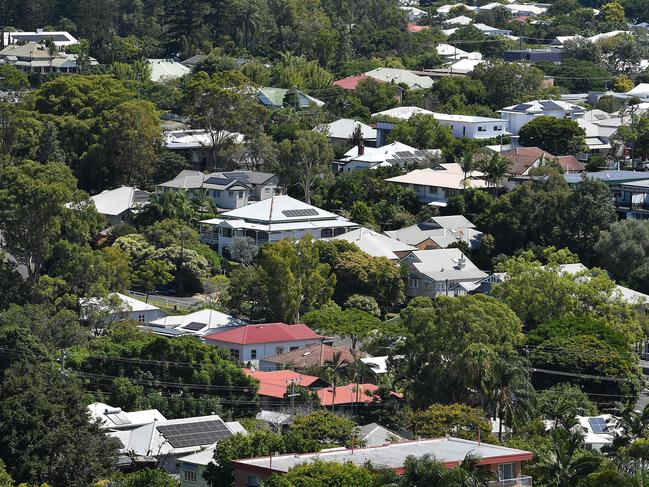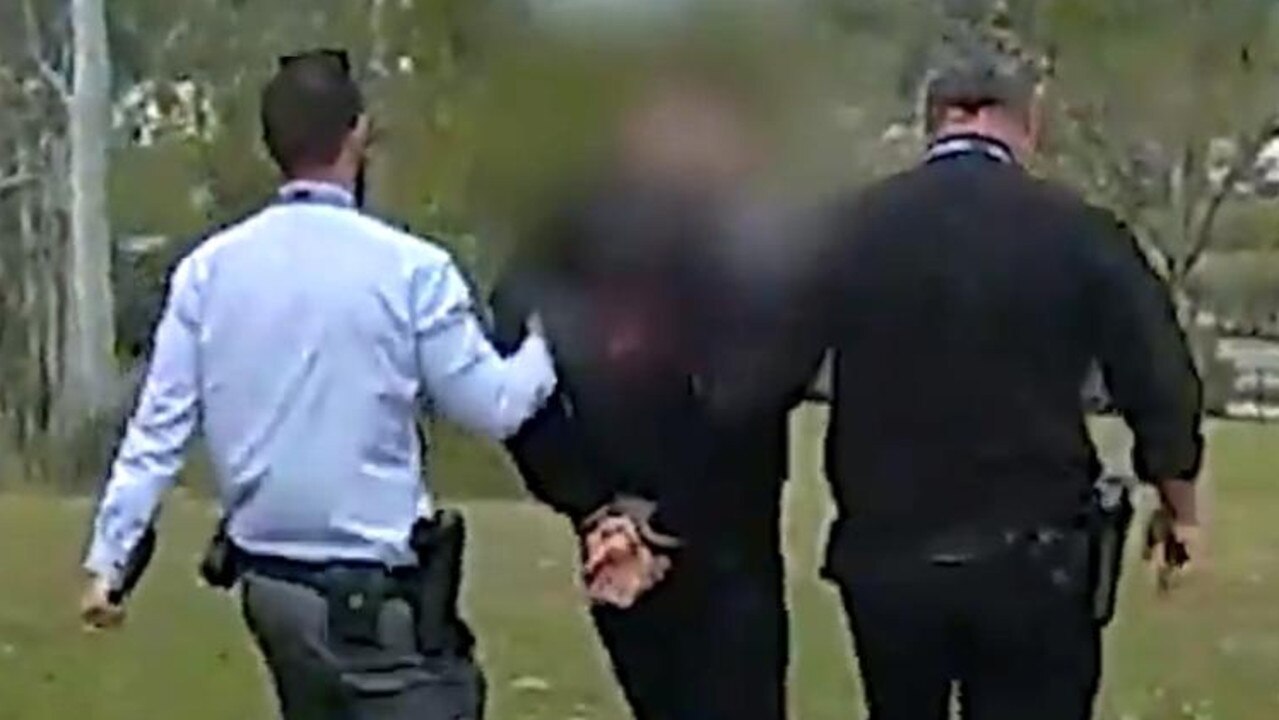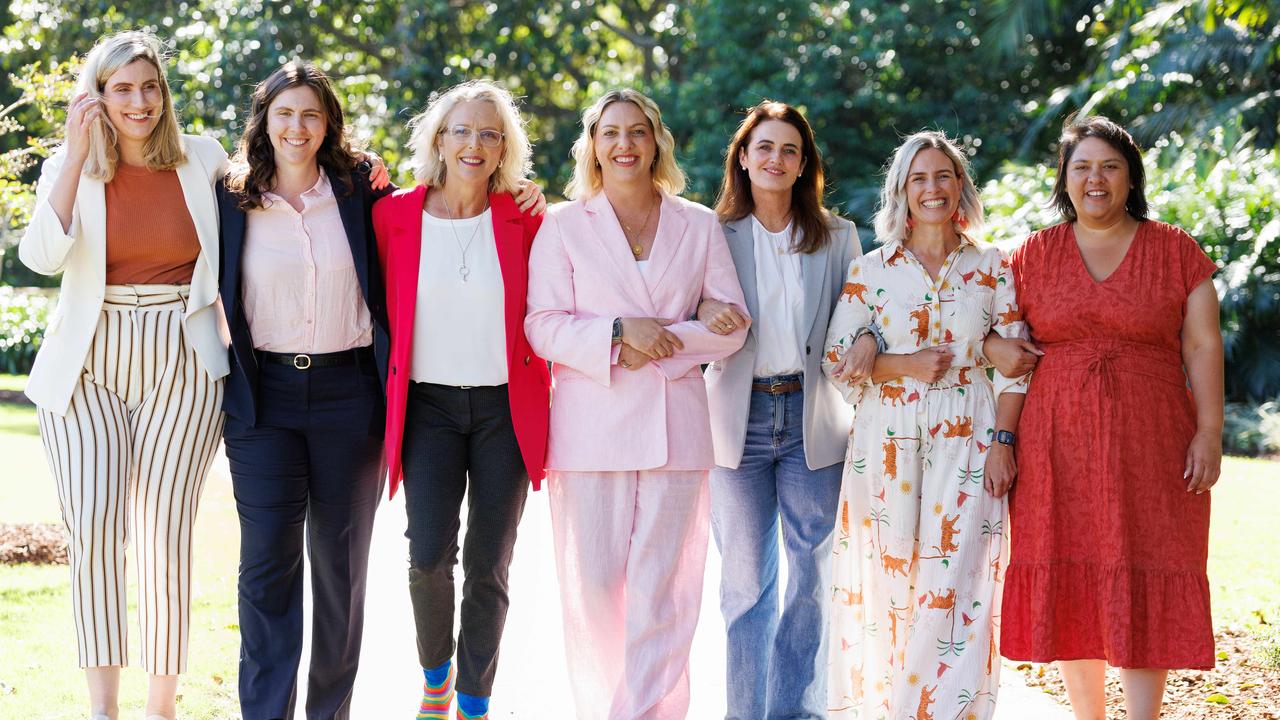300,000 in housing insecurity: Queensland’s grim homeless fears revealed
The equivalent of twice the population of Cairns is now in Queensland’s homeless danger zone, according to a new landmark report.

QLD Politics
Don't miss out on the headlines from QLD Politics. Followed categories will be added to My News.
The number of Queenslanders now in the homeless danger zone is about double the population of Cairns, as soaring rental prices leave at least 150,000 households in critical housing stress.
And there is no end in sight, with the state government’s planned delivery of public housing needing to increase tenfold to keep up with demand.
Queensland’s desperate rate of homelessness has been laid bare in a new landmark report, which reveals there are about 300,000 Queenslanders experiencing housing insecurity, as soaring rental prices disproportionately affect lower-income families and inadequate supply of social housing leaves many languishing.
The Blueprint to Tackle Queensland’s Housing Crisis report, commissioned by the Queensland Council of Social Service, also reveals the rate of homelessness in Queensland surged by 22 per cent since 2017 – far exceeding the national rise in homelessness of 8 per cent.
According to the report, there are 150,000 households with unmet housing needs, which the social services peak body says equates to about 300,000 people who are either homeless or paying more than 30 per cent of their incomes on rent.
“We had said that there was a population the size of Gympie on our social housing register,” QCOSS chief executive Aimee McVeigh said.
“We can now see from this report there’s around 300,000 Queenslanders currently experiencing housing insecurity.
“And to put that into perspective, that’s about double the population of Cairns.”
Areas to the south of Brisbane were struggling most, with one in 10 Logan, Beaudesert and Gold Coast households categorised as homeless or living in housing that is not affordable.

But the daunting scale of the crisis was eclipsed by the inadequacy of the response from government, according to Ms McVeigh, who said the lack of public housing supply in the pipeline was the most alarming concern.
The research, led by widely respected UNSW housing academic Hal Pawson, forecasts another 70,000 Queensland households will experience an unmet need for affordable housing over the next 20 years, with 54,000 of those likely to be in need of social housing.
The Palaszczuk government would need to double its construction commitment of social housing to 2700 homes a year to keep up with current demand, but the report says a staggering 11,000 public dwellings are needed each year to clear the backlog as well as prepare for the dire projections.
“We know that if we continue to respond to the crisis in the way that we are, we are going to see things get worse,” Ms McVeigh told The Courier-Mail.
“The report finds that, even just to maintain the status quo, we’d need to double the number of houses currently in the pipeline and we know that actually much more than that is required.”
Ms McVeigh said the “staggering number” of 11,000 social homes needed each year meant more investment was required from both the state and federal governments, while alternative policy options needed to be more seriously considered.
“It shows we do need to quickly look at models like build to rent and make sure that we have large amounts of housing coming on that includes social and affordable housing in those developments,” she said.
“We need more money into the housing investment funds and we need to better regulate the private rental market.”
The federal government’s current housing plan is to build about 40,000 new social and affordable homes across the country while the state government committed an extra $1bn to its housing investment fund at last year’s Housing Summit in response to The Courier-Mail’s Hitting Home campaign.

But Ms McVeigh said the current promises were “just a drop in the ocean” in responding to the scale of the crisis.
“We‘ve got 46,000 people on our social housing register and growing and hundreds of thousands more Queenslanders who could be eligible for social housing or might become eligible for social housing,” she said.
“These are positive steps forward but we need to pick up the pace and we need much more ambition.”
The report says a recent sharp rise in rental prices has been more heavily concentrated at the lower end of the market, halving the number of private tenancies at affordable prices for low-income households from 26 per cent to 13 per cent since 2017-18.
This impact has been particularly felt by regional Queenslanders, with the proportion of rentals affordable to the local population falling from 36 per cent to 17 per cent.
“Compounding problems for low-income Queenslanders, rent inflation at the lower end of the housing market has been greater than in the middle of the market,” the report says.
“The ongoing loss of affordable rental housing due to the expiry of the National Rental Affordability Scheme program is only compounding the more deeply embedded decline in the private rental market’s ability to generate tenancies affordable to low-income renters.”
The report says a lack of transparency from the state government with the infrequent release of data on Queenslanders in need of social and affordable housing makes it difficult for service providers to assist those in need. This concern extends to the government’s promises to alleviate the crisis.
“The somewhat opaque nature of recent Queensland government announcements on increased housing investment (for example, on timescales, tenure breakdowns and delivery modes) limits scope for stakeholder engagement on policy development and for accountability on program delivery.”
Housing Minister Leenne Enoch on Monday said she had referred the report to her department and was committed to working alongside service providers to alleviate the pressure on housing in Queensland.
“One of the things that struck me in the report was this idea that every single person that might be or every single household that might be in housing stress would need a social housing outcome,” she told ABC radio on Monday morning.
“But we know that over the last year alone, my department was able to provide some 200,000 forms of support. Not all of those social housing, of course, but nevertheless, we continue to build more social housing, commencing record amounts at the moment through our record $3.9 billion investment.”
The report was critical of data and modelling available to provide accurate information about the crisis in Queensland, which Ms Enoch said the government was aiming to address by engaging the Australian Housing and Urban Research Institute.
“We need that robust model to predict future supply and demand for social housing in particular, but housing more broadly in Queensland given that we’ve seen some unprecedented changes and complex issues over the last couple of years as a result of course mass migration,” Ms Enoch said.
Brisbane-based federal MP Anika Wells said the best thing the federal government could do was to implement the $10 billion Housing Australia Future Fund.
“It is the biggest investment in social and affordable housing in more than a decade and once we get that through, once we get returns from the Housing Australia Future Fund that will deliver outcomes,” she said on Monday.
The Aged Care and Sport Minister said it would deliver 30,000 new social and affordable homes in the fund’s first five years.
“This is a massive issue, it was absolutely a massive issue at the election. That’s why we took such a big policy to the election and why we’re doing everything we can to get it legislated now.”
“It’s not one we’re going to fix overnight and people are doing it really tough out there and we’re working with everybody,” she said.
MAIN POINTS
- 150,000 households don’t have affordable housing.
- One in 10 Logan, Beaudesert and Gold Coast households are homeless or living in unaffordable housing.
- 70,000 more Queensland households will experience an affordable housing crisis over the next 20 years. 54,000 of these will be social housing-eligible households.
- 11,000 new social and affordable homes are needed each year over 20 years just to meet the backlog and arising need.
- 2700 social rental dwellings must be built every year to ensure this backlog of need doesn’t grow larger.
- Homelessness in Queensland has risen by 22 per cent since 2017, compared to only 8 per cent across Australia.
RECOMMENDATIONS:
- Queensland government to develop a housing strategy framed by overarching goals, and re-establish a distinct housing entity within government.
- Queensland government to publish annual statistics relating to social and affordable housing.
- Further expand the Queensland Housing Investment Fund and Housing Australia Future Fund.
- Investigate renewing and redeveloping existing government-owned public housing estates.
- Mandate inclusion of social and affordable housing for residential developments on formerly government-owned land.
- Further strengthen rental regulation and enhance tenants’ rights.
More Coverage
Read related topics:QLD housing crisis





